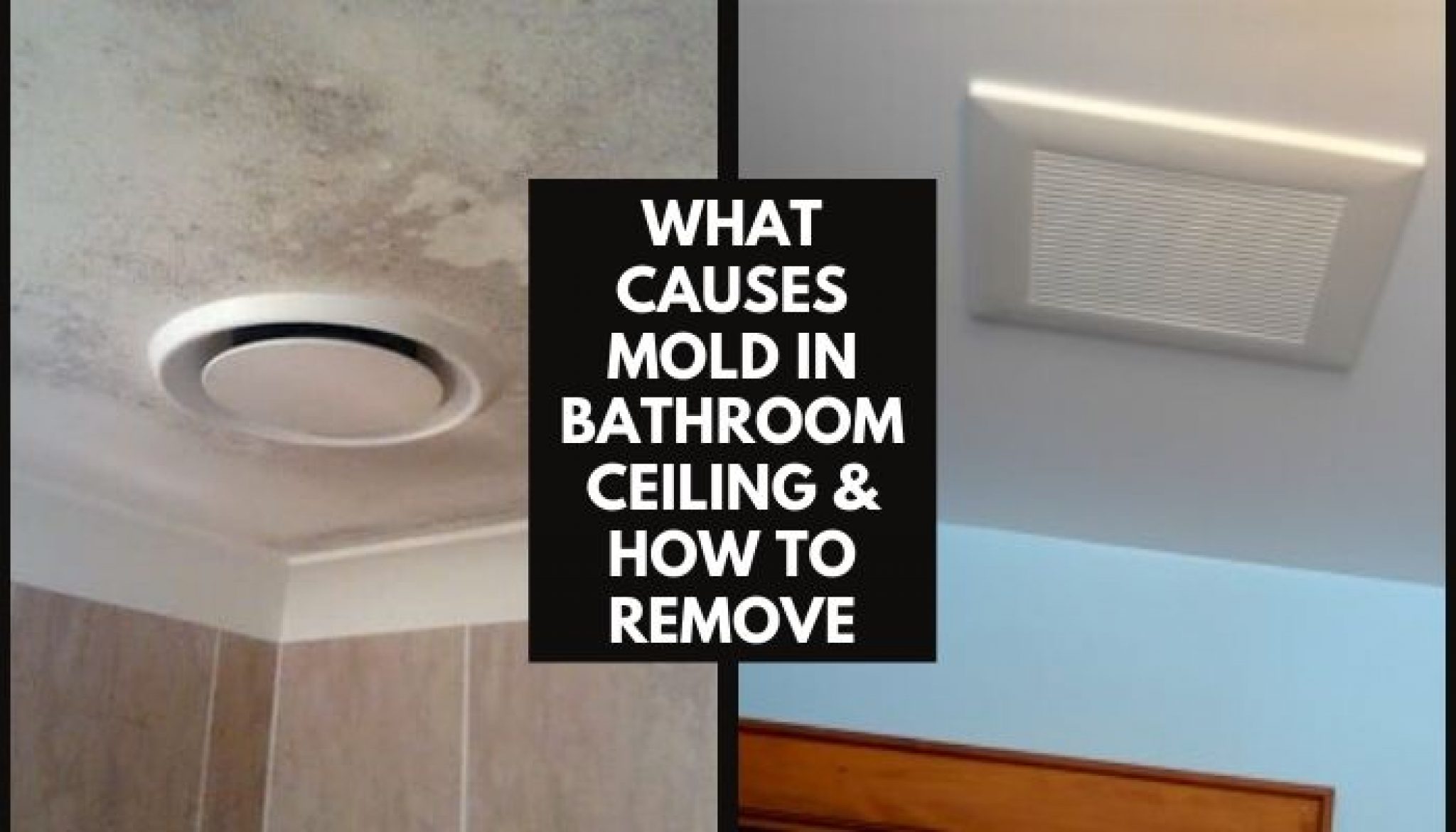Understanding Black Mold in Bathrooms

Black mold, scientifically known as Stachybotrys chartarum, is a type of fungus that thrives in damp, humid environments. Bathrooms, with their constant exposure to moisture from showers, baths, and humidity, are particularly susceptible to black mold growth, especially on surfaces like ceilings.
Causes of Black Mold Growth in Bathrooms
Black mold requires moisture and a food source to grow. In bathrooms, these conditions are readily available. Here are some common causes of black mold growth in bathroom ceilings:
- Leaking pipes or fixtures: Leaking pipes or faucets can create constant moisture on the ceiling, providing an ideal environment for black mold to flourish.
- Poor ventilation: Lack of proper ventilation allows moisture to accumulate, creating a damp environment conducive to mold growth.
- High humidity: Bathrooms naturally have high humidity levels due to showers and baths. Without adequate ventilation, this moisture can condense on the ceiling, leading to mold growth.
- Condensation: Warm, moist air from showers can condense on cooler surfaces like bathroom ceilings, providing moisture for mold to grow.
Health Risks Associated with Black Mold Exposure
Exposure to black mold can pose serious health risks, especially for individuals with respiratory problems or allergies. The mold releases spores that can be inhaled, leading to a range of symptoms.
- Respiratory problems: Black mold spores can irritate the lungs, causing coughing, wheezing, shortness of breath, and asthma attacks.
- Allergies: Mold spores can trigger allergic reactions, causing symptoms like sneezing, runny nose, itchy eyes, and skin rashes.
- Other health issues: In some cases, prolonged exposure to black mold has been linked to more serious health problems, including headaches, fatigue, and neurological issues.
Preventing Black Mold Growth in Bathrooms, How to clean black mold from bathroom ceiling
Preventing black mold growth in bathrooms is essential for maintaining a healthy and safe living environment. Here are some tips to help prevent black mold growth:
- Fix leaks promptly: Repair any leaking pipes or fixtures immediately to prevent constant moisture from accumulating.
- Ensure proper ventilation: Install and use exhaust fans to remove moisture from the air after showers or baths. Open windows for additional ventilation when possible.
- Reduce humidity: Use a dehumidifier to remove excess moisture from the air, especially during humid seasons.
- Clean regularly: Regularly clean bathroom surfaces, including the ceiling, to remove any mold spores or dust that may be present.
- Use mold-resistant materials: When renovating or building a bathroom, consider using mold-resistant materials for walls, ceilings, and other surfaces.
Cleaning Black Mold from the Bathroom Ceiling: How To Clean Black Mold From Bathroom Ceiling

Removing black mold from your bathroom ceiling requires careful preparation and execution to ensure both your safety and the effectiveness of the cleaning process. This section will provide a step-by-step guide to safely and effectively eliminate black mold from your bathroom ceiling.
Removing Black Mold from the Bathroom Ceiling
Before you begin, ensure you have all the necessary materials, including a respirator mask, rubber gloves, goggles, a cleaning solution, a spray bottle, a scrub brush, a bucket, a sponge, a tarp, and a trash bag.
- Prepare the Area: Clear the area beneath the mold-affected ceiling. Remove any furniture, rugs, or other items that might obstruct your work or become contaminated. Cover the floor with a tarp to protect it from spills and debris.
- Protect Yourself: Wear a respirator mask, rubber gloves, and goggles to protect yourself from inhaling mold spores and skin contact. Mold spores can trigger allergic reactions and respiratory problems.
- Mix Cleaning Solution: Prepare a cleaning solution by mixing one part bleach with ten parts water. Bleach is an effective mold killer, but it can be corrosive. Always follow the manufacturer’s instructions on the bleach container. You can also use a commercial mold cleaner, but ensure it is specifically designed for bathroom use.
- Apply the Solution: Spray the cleaning solution generously onto the affected area of the ceiling. Allow the solution to sit for at least 10 minutes to kill the mold spores.
- Scrub the Mold: Use a scrub brush to thoroughly scrub the mold-affected area. Scrub in a circular motion to remove the mold and any visible stains.
- Rinse the Area: Rinse the ceiling with clean water to remove the cleaning solution and any remaining mold spores. Use a sponge to wipe away any excess water.
- Dry the Area: Allow the ceiling to air dry completely. You can use a fan to speed up the drying process.
